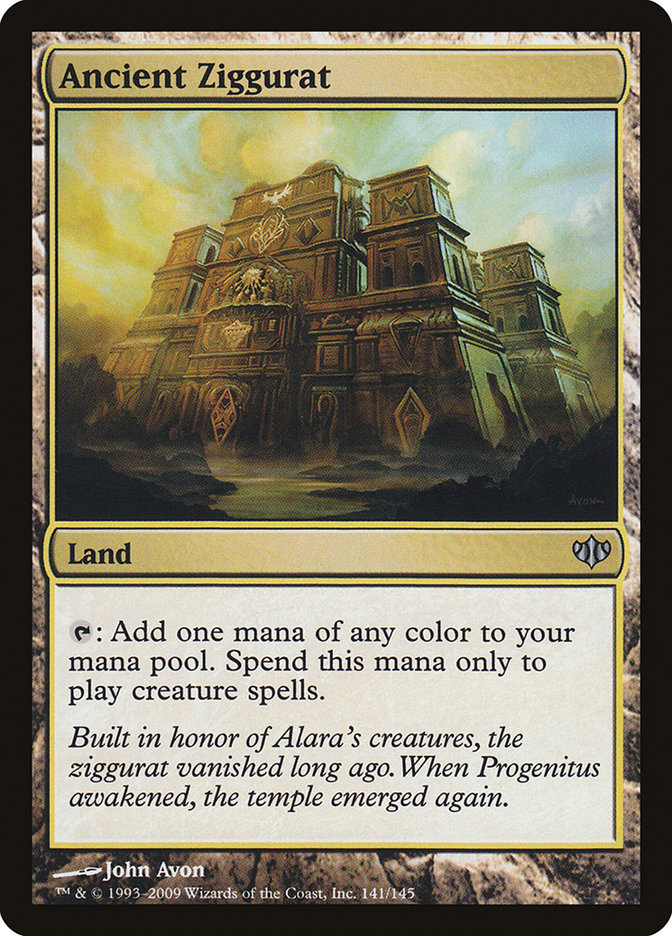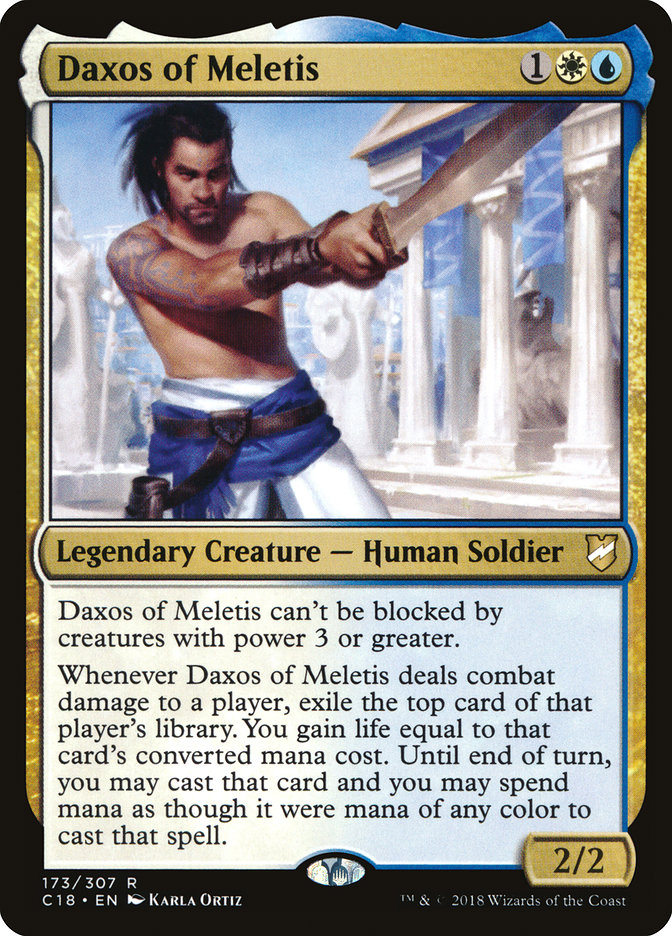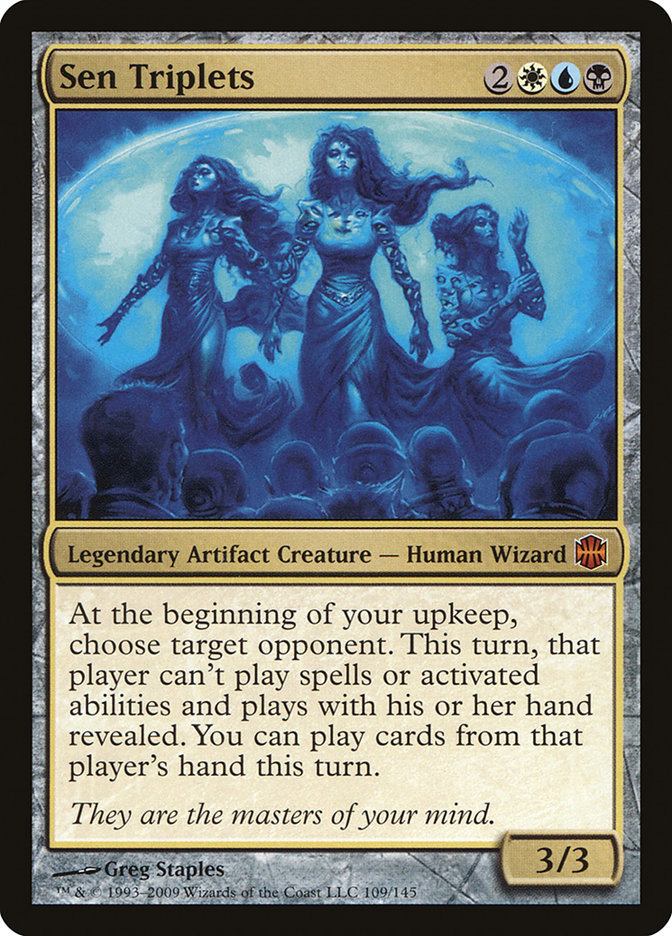An Orchard Most Exotic
Exotic OrchardExotic Orchard is a really good card, as evidenced by having a home in 31,793 decks on EDHREC, and that number isn't nearly high enough.
Welcome to Superior Numbers, a column that you may never see again but that exists at least this one time because I decided to try and figure out whether Exotic Orchard was as good as I thought it was.
It is, and I'm gonna tell you why. Eventually.
First though, let's take a look at the card in question. As I mentioned, Exotic OrcharedExotic Orchared shows up in 31,793 decks, which is a really solid amount. A lot of those are people who know just how good the card is, but there are a few external factors that also make it popular. For starters, the price of the card plays a part in regards to its high representation. It has been printed six different times, with each printing costing less than a dollar on Card Kingdom. That makes it easy to slot into a deck without giving much thought to the utility the card provides to you.
 | Printings: 7 Conflux Planechase 2012, Planechase Anthology Conspiracy: Take the Crown, Commander 2016, Commander 2017, Commander Anthology 2018 Avg Card Kingdom cost: $0.81
|
Second, I'm going to note that a portion of those numbers can probably be chalked up to the Precon Effect, as it has to date appeared in two separate Commander releases. I'll let our own Sam Alpert define the Precon Effect using words from his excellent Intellectual Offering series:
Here’s how this effect works: I go down to the local game store and buy my new Invent Superiority deck. I can’t wait to get home and start tweaking it. So to get organized the first thing I do is enter the original list into Tapped Out and then run it through EDHREC to see what suggestions the website has for me. Problem: by adding the exact decklist as it came out of the box I’m generating an inherent bias towards those cards. As more people do this those are the cards that begin to show up as the Top/Signature cards for the deck. Then my friend comes by. He only bought a loose copy of Breya, Etherium Sculptor because he has a large collection and doesn’t really want to spend the $35 on the other cards in the deck. He opens up EDHREC to see what cards other people are for sure including in their lists and bam, he’s assaulted by a slew of cards from the preconstructed deck! But this is what people are playing, right? So he adds them to his deck and goes about his business, blithely unaware of how suboptimal some of the cards he’s added are. When he goes to feed his deck back into EDHREC it just reinforces the bias. That’s the Precon Effect.
So at least a fraction of those 31,793 decks consist of people just jamming their precon onto an online deck builder, and other people reinforcing those stats. So what about the rest of the people running Exotic Orchard? What makes them run it?



Give me juicy autumnal fruit, ripe and red from the orchard
Gatherer has a few specific Exotic Orchard rulings also worth glancing over that show the inherent power in the card:
- 2/1/2009: The colors of mana are white, blue, black, red, and green. Exotic Orchard can't be tapped for colorless mana, even if a land an opponent controls could produce colorless mana.
- 2/1/2009: Exotic Orchard checks the effects of all mana-producing abilities of lands your opponents control, but it doesn't check their costs. For example, Vivid Crag has the ability “{tap}, Remove a charge counter from Vivid Crag: Add one mana of any color to your mana pool.” If an opponent controls Vivid Crag and you control Exotic Orchard, you can tap Exotic Orchard for any color of mana. It doesn't matter whether Vivid Crag has a charge counter on it, and it doesn't matter whether it's untapped.
- 2/1/2009: When determining what colors of mana your opponents' lands could produce, Exotic Orchard takes into account any applicable replacement effects that would apply to those lands' mana abilities (such as Contamination's effect, for example). If there are more than one, consider them in any possible order.
- 2/1/2009: Exotic Orchard doesn't care about any restrictions or riders your opponents' lands (such as Ancient Ziggurat or Hall of the Bandit Lord) put on the mana they produce. It just cares about colors of mana.
The most important thing to unpack from all of this is that beyond just mirroring any multi-land your opponents are running, you have several popular lands that give you perfect mana. Cavern of Souls (18,443 decks), City of Brass (25,991 decks), Mana Confluence (27,305), and the Vivid lands (on average in over 12,000 decks each) plus many others will let you tap your Orchard for any color. That's pretty spectacular, and gives Exotic Orchard a decent chance of providing perfect fixing for your deck. How good of a chance is decent? Well, the genesis of this article is my trying to quantify exactly that.


What is paradise, but, a garden, an orchard of trees and herbs
First off, let me explain the imperfect methodology I used to come to my conclusions:
- Data was obtained using a random two-color deck against three other entirely random decks, which could be of any possible color combination.
- I went last in every game just to maintain consistency.
- For each enemy deck, I made what I assessed to be the optimal play based on cards in hand, which dictated the lands they would play for those turns.
- On turn three, for the two-color deck, regardless of the play, I ignored whatever land I would have normally played and substituted an Exotic Orchard into that slot.
- I then added each possible third color and noted how much of that mana Exotic Orchard could produce in each given hypothetical scenario. For example, if I was playing an Azorius deck, I would check to see how many of my colors I would make if I was playing Bant, then Jeskai, then Esper, basically tripling the amount of data I could collect for each mock game played.
Obvious problems with this methodology
- The decks you play against skews the results. The more mono-colored decks you play against, the less likely you are to get colors you need, and conversely, the more 4-5 color decks you play against, the more likely you are to get the colors you need. I probably should have tracked this variable, but I did not. It would obviously smooth out over a huge number of games.
- Playing against green decks also would skew the results, as land ramp provides more lands and thus more chances for those lands to produce colors you need. Again, this would probably even out with a higher amount of games, but there's always a chance that in the number set I played we got a higher or lower than average amount of green enemy decks.
- The budget and power level of the decks you are facing also skews the results. A two-color deck running mostly basics is going to have a lower percentage chance to provide your colors than a variant on that same deck running fetches to get their ABUR dual or shock lands.
- Given the fact that I'm extrapolating data out from one deck into 3 virtual decks it isn't as robust and diverse a data set as I'd get from doing 300 true games.
All that said, I think we can get a rough approximation about how effective Exotic Orchard is in a three color deck:

Let's break that down just a little:
- 0 colors provided: At no point by the end of turn three did Exotic Orchard provide zero colors of mana. Technically speaking, it could in a situation where all three opponents have played only colorless sources, but the odds of that are infinitesimal.
- 1 color provided: Only once did Exotic Orchard only provide a single color of mana, and that was in a game where I happened to only play enemy decks consisting of mono-green, mono-green, and Golgari, and the Golgari deck didn't hit a black source by turn three. Exotic Orchard was able to produce at least one of my deck's colors 99.67% of the time.
- 2 colors provided: Over 92.3% of the time, by the end of the third turn, Exotic Orchard was providing two of the three colors of mana I wanted.
- 3 colors provided: By the end of turn three, 82.67% of the time Exotic Orchard provided perfect mana for my deck.
In short, by turn three, Exotic Orchard is a effectively a second Command TowerCommand Tower more than four fifths of the time.


I work hard in the orchard, not for the money anymore, but for something I can't explain
One final note to sell you on Exotic OrchardExotic Orchard: as of January 18th, 2016 the Commander rule known as Rule 4 was removed from the game. Prior to this date, decks could only generate mana of a color in their commander's color identity, and any mana produced of another color was converted to colorless. With this rule removed, cards like City of BrassCity of Brass (and yes, Exotic Orchard) can now produce the full spectrum of colors as long as the appropriate conditions are met. Beyond just fixing, this means that cards that may occasionally care about casting cards outside their color pie, like Sen TripletsSen Triplets, can make even further use of Orchard.
You should be making use of it too, in almost every 3+ color deck in your arsenal.
That's it for this first - and maybe last - volume of Superior Numbers, depending on whether I come up with any more cards whose efficacy I can find a way to analyze. If you have any suggestions I'd love to hear them. As always, thanks for reading!
Dana Roach
Dana is one of the hosts of the EDHRECast and the CMDR Central podcast. He lives in Eau Claire, WI with his wife and son. He has been playing Magic so long he once traded away an Underground Sea for a Nightmare, and was so pleased with the deal he declined a trade-back the following week. He also smells like cotton candy and sunsets.
Your opinions are welcome. We love hearing what you think about Magic! We ask that you are always respectful when commenting. Please keep in mind how your comments could be interpreted by others. Personal attacks on our writers or other commenters will not be tolerated. Your comments may be removed if your language could be interpreted as aggressive or disrespectful. You may also be banned from writing further comments.
